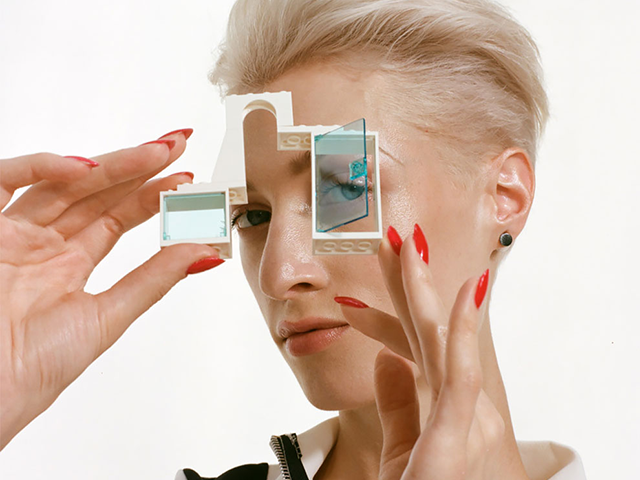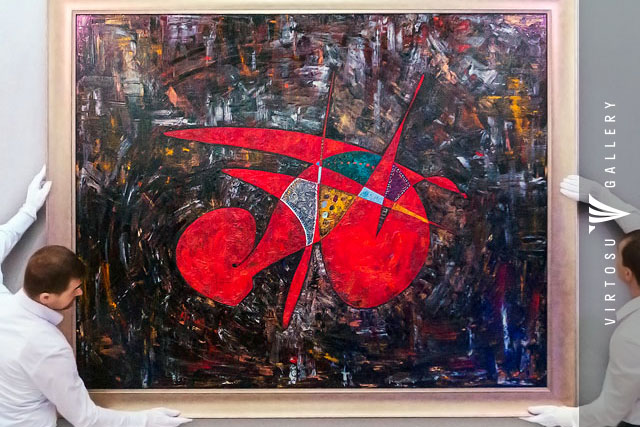- Beautiful art or is art beauty something of the past?
- Art beauty a vehicle to carry our intent.

- 31 May '19


by Robert McIntosh
31 May '19Beautiful art or is art beauty something of the past?
Art beauty, something of the past?
Beauty is one of those ideas that over the past 100 years or so has been slowly downgraded when it comes to considering the value of art. It’s not so long ago that people would have named it as one of the qualities that defined art. Many still do. But what they mean by beauty has become a shadow of its historical self. A long time ago, the philosopher Immanuel Kant could discuss it as an aspect of the moral sense of what it was to be human – part of how human beings aspired to higher ideals and dignity.
Today, these lofty sentiments seem alien and unreal. Did people think like that? After all the horrors of the last century, and the continued horrors of this one, who could still believe in the value and goodness of the beautiful?
‘To write poetry after Auschwitz is barbaric,’
was the pessimistic conclusion of Theodor Adorno, one of the great aesthetic theorists of the mid-20th century.
What no longer functions in the idea of beauty are the sense that it represents something of the value and importance of being human. We can call artworks, objects, or other people beautiful, but this is disconnected from any greater purpose or aspiration. Individual taste and personal pleasure don’t amount to much, after all. ‘Liking’ something (on Facebook), even finding something ‘beautiful’ (such as a car or pop star), doesn’t help you to determine whether it is good (with a small ‘g’), let alone whether it is Good.
But art has become largely indifferent to the idea of the Good, in the big, old-fashioned, capital G sense of the word. Contemporary art tends to reflect the cultural mood of its time, and today any talk of beauty is skeptical or ironic. Art does not present a positive take any more on what humanity might be capable of. Let’s face the fact that nowadays we don’t think of humanity as very good. It’s more usual to view ourselves as out-of-control monsters driven by unconscious impulses to consume ever more, exploiting natural resources in a headlong rush towards the destruction of the environment, the planet, and, eventually, ourselves. Nothing good about human beings, then. Beauty? If anything, we regard humanity as pretty ugly.
I don’t subscribe to this bleak, misanthropic vision, but I have to admit that it’s the dominant cultural mood right now. If it weren’t, you wouldn’t find artists busy making works that imagine the world after we have disappeared. (There’s lots of it about.) And you wouldn’t find them celebrated in big museums and biennials for doing so. The element of beauty was always about how we valued our humanity – about how beauty stood in for the optimism that everything could, eventually, be beautiful. But since we see the humanity and the world differently, beauty no longer matters in art. It should – but it doesn’t.
Art beauty is always relevant
So let me create a fundamental distinction: art needs beauty, not beauties. In art, the beautiful faces of muses and fillies have already garnered centuries of attention. The media have since adopted this fixation and continually subject women to judgment based on their physical appearance, creating normative and restrictive notions of beauty.
Beauty, as I understand it, is far more than a pretty face. And if we accept that it might assume many guises, but be primarily a force of attraction that is somehow alluring – often but not exclusively visual – then how can we reasonably argue against its value in art?

Prophet Muhammad Daughters is a series of paintings by British artist Gheorghe Virtosu. The body of the Series opens as the artist's imagination works on the visualization of women of Islam. The question compelled me to sit through the work when I first saw it for 15 minutes. When looking at the painting, I began to narrate my journey between the two places. The artist confides in his viewer a dilemma. Despite his original intention of silently observing these two quarters, I was astonished as to how he felt capable of presenting a politically neutral picture and still question the role of women in Islamic society. As he voices his canvas, his tone is inflected by intent, the relevance of this work resonates in an increased language of globalization of today. This work addresses the concerns by representing a framework for the cultural discourse. For the viewer, the composed work conveys many complexities, but, above all, an attempt to improve the role of women in the local society.
Art, in its diversity, is impossible to define. But something within it has to arrest and work upon us to transform. My argument isn’t about art reproducing standard representations of beauty, nor does it advocate art that provides unremitting and, therefore, benign viewing pleasure. No. As someone living in an age when so much political maneuvering and messaging is embedded within the visual, when so many images vie for our attention with a fixed agenda, we need art to inhabit beauty as a temporary stratagem, a Trojan horse, in order to go beyond the borders of the norm or the benign and enable us to see things anew.

-
Art Advisory Services


